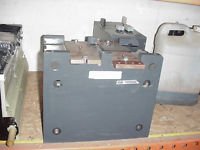FWIW, I'd skip the caps; not enough benefit for the extra volume and weight.
First, I'd parallel your existing packs so the load on each one is only half of what it would normally see, so it's voltage sag would be that much less as well. This should also get you more total range out of them, because the BMS won't trip as early due to load-sag.
If you need to replace the existing packs for any reason, I'd go with a simpler type of battery made of larger cells, which while it would probably be different in shape and possibly larger in some dimension than you'd like, less parallel cells makes for less potential connection issues. Generally the larger cells are also made for higher currents as well, though that's not universal.
There's a thread in the for-sale-used section where someone is selling EIG NMC packs, and based on my experience with them over the last few years, they're a good cell and interconnect method--though they may not be as power-dense as the packs you have now (so bigger for the same Wh).
I'm using a 14s2p (about 35+lbs for over 2.2kwh) on the SB Cruiser trike, which probably weighs (with me on it) similarly to you and your rig, and I regularly pull 120A from it for up to a few seconds during acceleration to 20MPH from a stop, around a dozen times each way on my daily work commute, then it drops down to a more reasonable 15-20A for cruising at 20MPH.
I don't use a BMS, I just use a Cycle Analyst (v2.3) to monitor Ah/Wh/Volts to be sure I don't run them down too far, and periodically check cell balance (which so far has not been a problem on the trike's 2p pack. On CrazyBike2's much older 1p pack, commonly hit with 80A+ peaks under the same conditions as the trike's 120A, I had one cell that developed higher resistance / greater voltage sag, but it is still working in the lighting pack (a 4s1p even now, and still gives full capacity at the lower currents that pack sees). All of the cells I have were used (in unknown conditions) when I got them, yet they're still holding up fine, and have stayed balanced. This doesnt' guarantee every pack made from these cells would, but so far it's been good enough for me.

One of the reasons I like these cells, though, is that they are very easy to reconfigure, so if a cell does go bad, taking it out and replacing it (if you bring any spares) is easy. Or if the controller/etc can run on 13s, the cell can simply be removed and bolt the pack back togehter to run it at less voltage / wh / range.
The one issue might be balance of weight, since you have a bike, not a trike, and nowhere in the center of it to mount a pack (like I did on CrazyBIke2)--so you'd probably want to split the weight between the two sides. Depending on the capacity you need, you could either run a 14s2p pack on each side, if you need 4-5Kwh, or if you only need half that you could run a 7s2p pack on each side and series them with a fat cable.

They can be charged at 0.5C, so 20A for a 40Ah pack like mine, though I've charged it at 24A several times without apparent issue. I usually use a 12A charger that's built into the trike (meanwell HLG-600H-54A becuse it can be used on 220v or 110vac), but have also used the Cycle Satiator at 5A. At 24A it's about 2 hours to full charge. Closer to 2.5 hours at less than 20A (0.5C).
If really fast charging (<1 hour) is a goal, then the LTO is probably a better bet.




